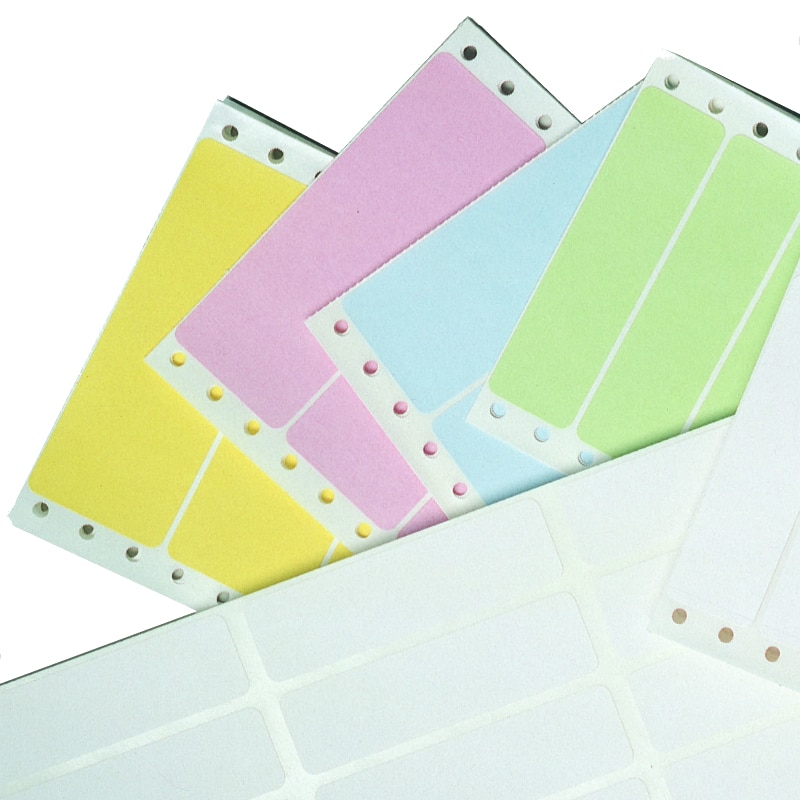Which Label Material Should You Choose?

If you've got an item that needs to be labeled, the odds are that you simply want to label it once and be done with it. That being the case, doesn't it make sense to choose a label that best suits the item and the environment in which it lies? In choosing the right thermal label or laser label, you'll want to consider more than whether it's simply going to stick; you'll also want to keep aesthetic considerations in mind, especially if you're selecting a label for your company's products. Do you want something bold and eye-catching? Something simple and clean? Or would you prefer that potential customers be able to see right through to the product inside? Learning more about the different types of label materials available can help you make a smart product packaging decision, which in turn can lead to higher sales and continued growth for your company.
Paper
A solid all-around choice, paper labels come in a wide range of sizes, colors, and volumes; LLT alone offers over 100 varieties suited to a variety of industries and environments. Whereas labels made from other materials often come in only one color, paper labels can be ordered in every color of the rainbow (and then some). What's more, paper tends to be the least expensive material for label creation, making it an attractive option for penny-pinching small companies and for larger firms that need to make a lot of labels at once. Buying paper labels, however, means getting what you pay for. Though they work exceptionally well in stable environments (and on products without special labeling needs), they offer no protection against water, dust, or other environmental hazards.
Glossy
Glossy labels (which includes labels marked as "semi-gloss") are a popular choice for products looking to be flashy and eye-catching in their packaging, as their polished surface helps maintain image vibrancy and the crispness of accompanying text. The drawback lies in the fact that glossy labels are rarely available in colors other than white, which lessens the level of flexibility you can employ in the creation of your labels. That said, images and text both tend to pop off of that white surface, and the lack of color in the material means that you can print just about anything you want on it. The popularity of glossy labels also means that they come in a wide variety of sizes, which makes them an excellent choice for companies with unusually-shaped products or for those that sell a variety of different goods. LLT offers glossy labels in over fifty sizes to ensure that its clients can make use of this fantastic material regardless of the shape of their product or the model of their printer.
Matte
Are you looking to strike a classier or more elegant tone with your packaging? If so, matte labels may be more your speed. Their lack of a slick, shiny coating gives them a softer appearance than their glossy counterparts, making them a fine choice for when subtlety and nuance are the words of the day. Whereas glossy labels can sometimes feel cheap or ostentatious, matte labels provide a classic look perfect for high-end offerings; put another way, matte might be the way to go if you want the focus to be on your product and not on its label. Matte labels are also better suited for direct-mail items, as they'll never be placed on a shelf and asked to battle for attention with competing offerings. What's more, matte labels tend to be less expensive than glossy, which can make a big difference for small companies that have to watch every expenditure. One downside is that matte labels aren't as popular as glossy, meaning that there aren't quite as many size or volume options out there to choose from. Another is that, as with glossy, you'll likely only be able to find matte labels in white.
Clear
The benefits of clear labels are two-fold. For one, being made from film lends them a natural measure of water resistance. That makes them a smart choice for food, beverages, bathroom and kitchen products, and any other item that will likely be exposed to moisture. Secondly, using a clear label can provide you with the ultimate in the elegant, "focus on the product" feel discussed in the matte section. By using a clear label, you're sending the message to potential customers that you're so confident in your product that you want to show it off as much as possible. That's not to say that clear labels must be minimalist in their design; on the contrary, that clearness can act as a sort of blank canvas for companies that want to get inventive with the design of their labels. Clear labels even allow you to incorporate the color of your product into the overall presentation, granting you a level of flexibility and creativity that other label types just can't match. Be aware. However, that size options for clear labels aren't as varied as those for glossy or matte and that they tend to be more expensive than either.
Conclusion
We hope that this brief overview has given you the insight you need to make the right decision for your company's labeling needs. If nothing else, you've likely realized that there's a label out there for you no matter what the nature of your product or its method of delivery. Still, have questions? Feel free to contact one of our friendly and knowledgeable customer service representatives; they'll be happy to use their expertise to guide you to a smart and cost-effective choice.